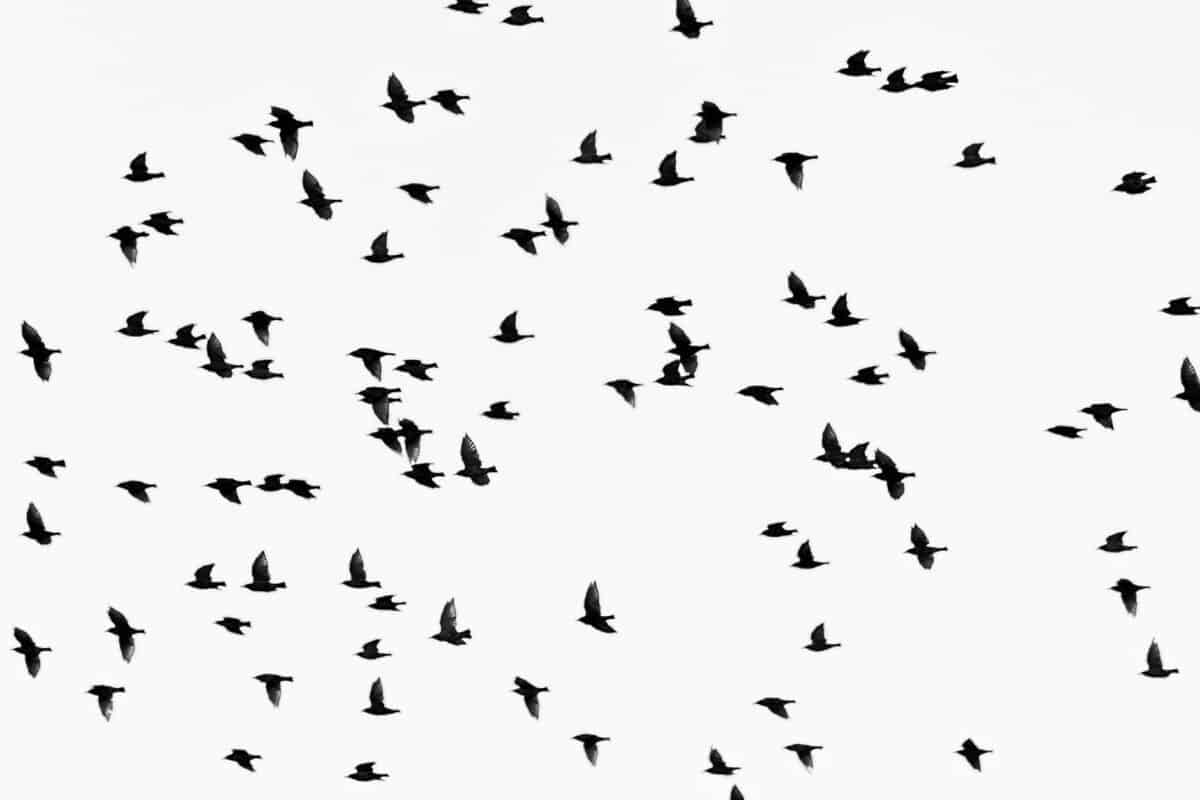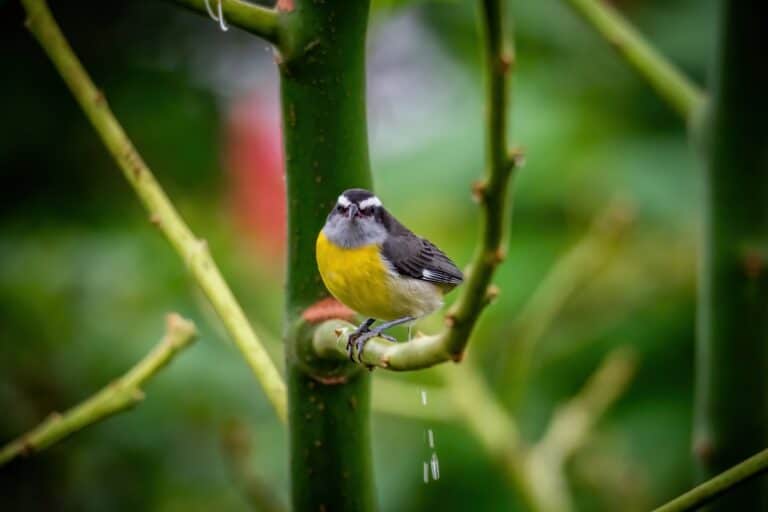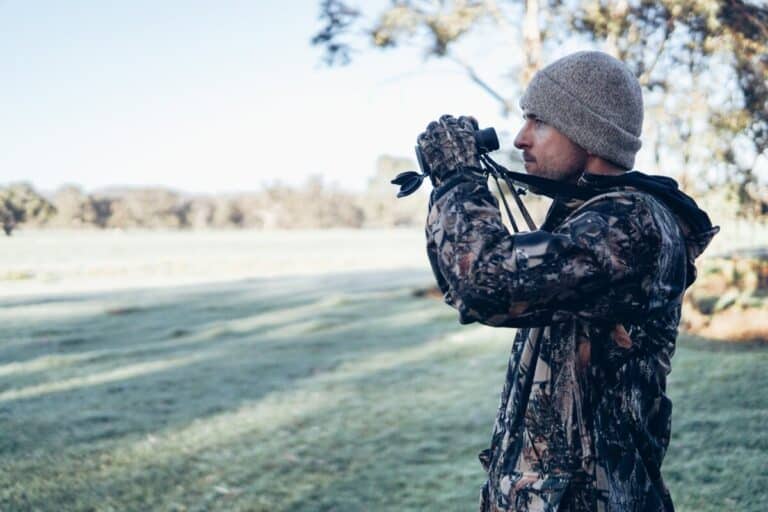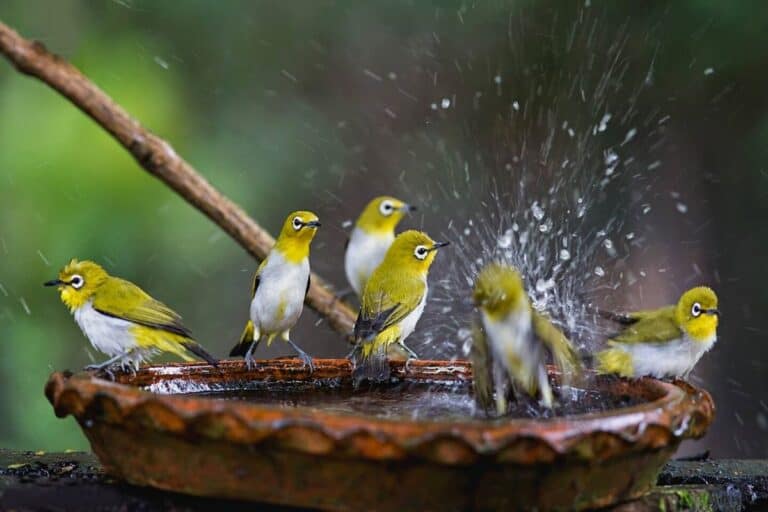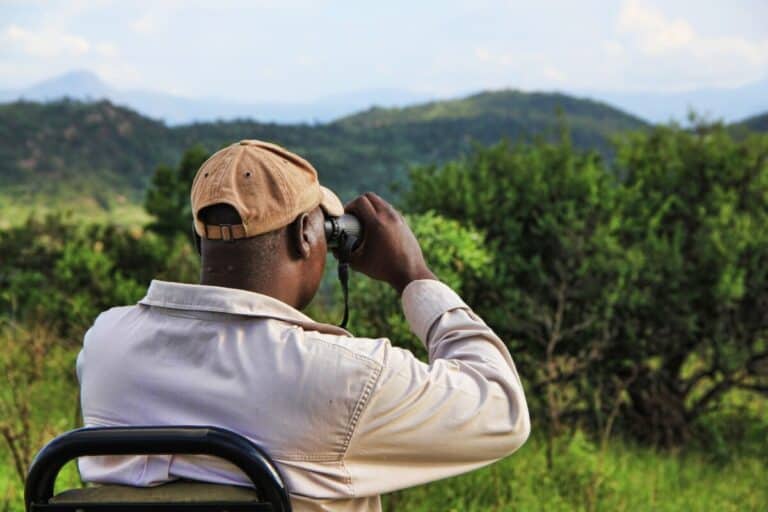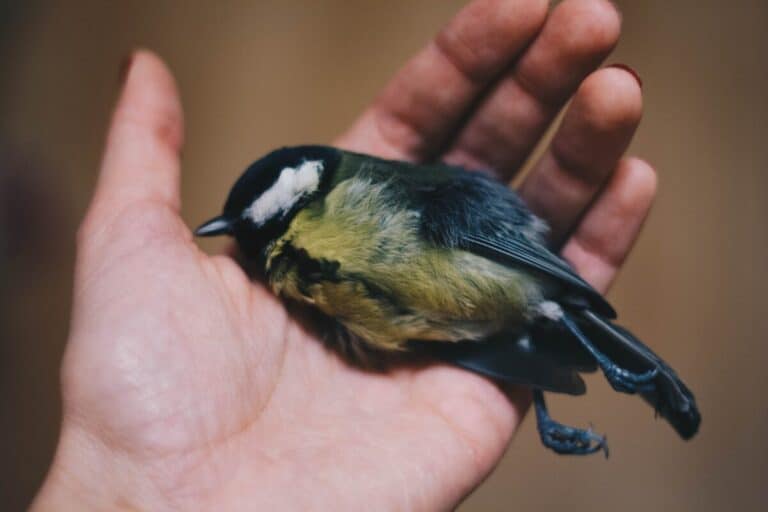Do Birds Ever Crash Into Each Other? (ANSWERED!)
We’re reader-supported; we may earn a commission from links in this article.
Oftentimes we see birds taking off into the skies with ease, sometimes in large flocks. Have you also been as curious as I about this question: “do birds ever crash into each other?!” I took the liberty to do some deep research on the net and found some definite answers. Here’s what I found:
Birds do crash into each other, but it is a rare occurrence. Birds possess a natural instinct to avoid to the right when they are about crash into each other head-on. Birds that fly in murmurations are able to anticipate the group’s change in direction, thereby adjusting their flight path and avoiding crashing.
While birds sometimes crash into each other, there have been interesting recent discoveries on the mechanisms they use to avoid crashing into each other. The techniques these little feathered friends use are really unique. Read on to find out more!
Bird Flight – A Crash Course
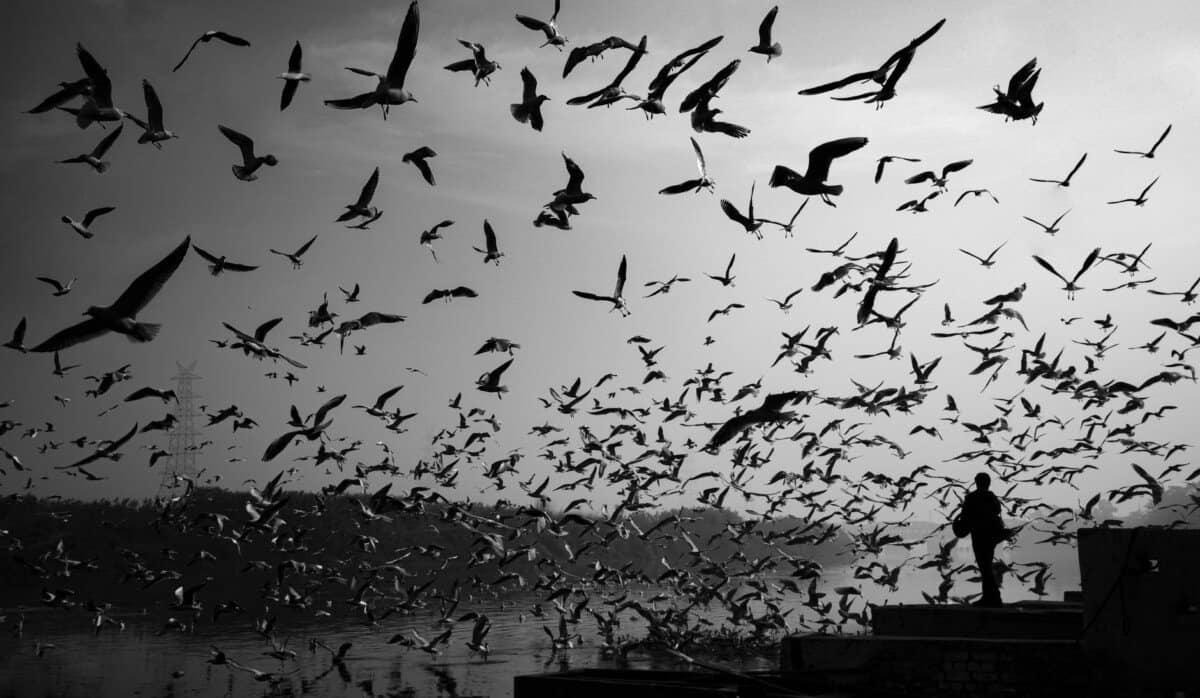
While you may have thought of this random question on whether birds crash into each other, the crash could actually lead to quite a serious injury to both birds.
This is because they are so light and have hollow bones. While we have our airport control centers to control our airspace when we fly in airplanes, how do birds really know when to avoid each other? Is it magic? Let’s dig into the details!
Oh, and if you’d like to read more on the survival rate of a bird when it crashes into a window, check out an article I wrote about this worrying problem for birds! You won’t regret reading it.
Also, if you have many birds entering your house, consider reading this article as I explain why they do so. It’ll help a lot!
Birds’ Ingenious Anti-Crash Techniques
We have seen the devastating effects that can happen to birds if they were to crash. So birds have developed several effective tricks to prevent themselves from constantly crashing into each other. Let’s look at the two ways in which birds can crash: head-on and in groups.
1) Avoidance of Head-On Collisions
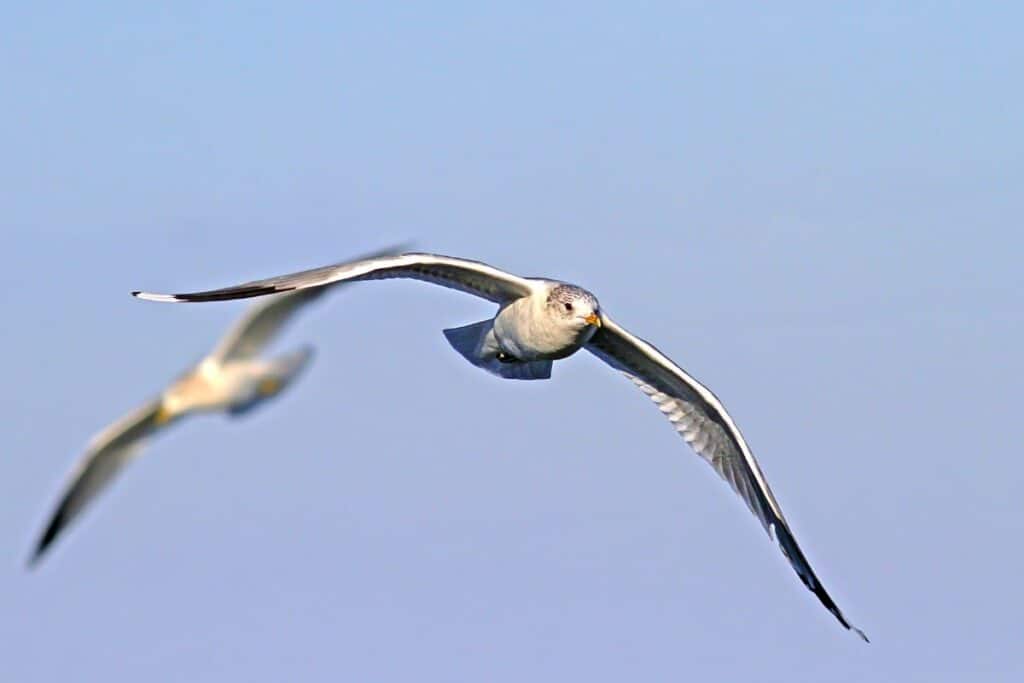
It is important for birds to be able to prevent crashes head-on while in flight. Well, obviously they would see where they are going, but they still would need some sort of secret mechanism that allows them to avoid each other in a short span of time.
Interestingly, after a bit of internet research, I found an interesting study online conducted by Mandyam Srinivasan and fellow scientists at the University of Queensland, Australia. They discovered through a series of tests on 100 budgerigars who were made to fly in a narrow tunnel to simulate a head-on collision.
They found out that 84% percent of more than 100 tests, these birds avoided by swerving to their right when placed in a head-on collision scenario. In the rest of the cases, there were no crashes observed.
What’s the most intriguing is that there seems to be a system or reflex inbuilt into the birds to avoid to the right in most majorities! Here’s a video to illustrate it:
Other than just avoiding to the right or to the left, they also avoided each other vertically, which means that they start off by flying off at a different height, preventing a head-on collision!
These scientists have also found that their collision avoidance behavior doesn’t depend on the direction of bird flight, concluding that there is no possible involvement of an internal compass. As of today’s current day and age, there is no scientific proof to determine what tells these birds to swerve to the right in a head-on collision.
Read more about the scientific article here.
2) Avoidance Of Crashes In Large Flocks
We often see birds fly in large flocks right? I recently found out that there are complex flight patterns in starlings called murmurations. Starlings are birds that tend to flock. When in flight as a flock, they tend to form these murmurations that resemble complex and dynamic 3D-model-like structures in the sky. Here’s how they look like:
Amazing right? These murmurations are commonly seen in starlings, but then it begs the question: how do they avoid crashing into each other in such a tightly spaced orchestra of feathers?
A scientist known as David Williams from the University of Washington took the initiative to study how birds adjust their flight patterns to avoid obstacles (other birds too) in flight.
His studies reveal 2 special postures that the birds take on. Here’s how they look like in slow motion:

Here we see two postures: the paused posture on the left and the folded posture on the right. The former is used to squeeze through larger gaps and the latter for small gaps.
More scientists have also stepped up to show using computer simulations, how these murmurations are made. They have concluded that there are no “psychic powers” that prevent their crashes, but rather just by simple local bird-to-bird interactions! How cool is that?!
Birds are known to anticipate the move or change in the direction of their group. They have a relatively large field of view, so they look at the big picture of the flock of birds as a whole, not just at the birds just them.
A real quick analogy is a football wave that happens at a stadium. It looks really coordinate when you see it from afar, and you know how to make it transition smoothly when it comes to you!
What Humans Have Learnt From Birds’ Anti-Crash Mechanisms
We, humans, tend to like to imitate mechanisms used by nature to enhance our lives. We emulated the bird’s flight and takeoff in our airplanes. Now, scientific advances are experimenting and studying the detailed mechanisms and computational models that allow birds to fly in such a coordinated fashion in murmurations.
The technology that we have hoped to emulate from the birds is for our drones. Presently, drones are being programmed with proximity sensors that simulate how birds avoid crashing into each other.
However, technology is currently not advanced enough for a cross-talk between the drones themselves like how birds do it.
Honestly, I thought it would be interesting to see these robots being programmed to veer to the right like how birds do to avoid head-on crashes in the near future!
Here’s a video on how drones currently avoid obstacles:
Final Thoughts
Birds are indeed very interesting creatures with inbuilt anti-crash instincts and mechanisms. And as such, they do not crash as often as we think they do. Birds are also so very twitchy with their high metabolism rate, making them easier to avoid each other in flight.
Anyway, hope you’ve enjoyed reading this article as much as I enjoyed writing it. Thanks for reading and happy birding!
My Recommended Birding Resources:
Hey there, Justin here!
Here’s a list of all my favorite resources, products, and brands I trust and love.
My Celestron Nature DX 8×42 Binoculars: It’s a great budget pair for beginner birders. Highly valued for its price! Read my review.
Safe Paint for Bird Baths Guide: Learn about non-toxic paint for painting bird baths.
Safe Sealers for Bird Baths Guide: Learn which sealers are safe for bird baths.
Safe Paint for Bird Feeders Guide: Learn what special care needs to be taken to paint bird feeders with the right paint.
Safe Paint for Birdhouses Guide: Learn about non-toxic paint for painting birdhouses. (Not the same as bird baths!)
Bird Identification Apps Guide: 2 of my favorite birding apps are Merlin Bird ID, and eBird Mobile! Merlin is great for tracking and identifying birds, and eBird Mobile is great for tracking the birds sighted when birding.
Check out my resources page for the full list of resources I recommend!

Justin Chia
Justin is the founder and author of Birding Outdoors. He is a Nanyang Technological University (NTU) alumnus with a Bachelor of Biological Sciences and a former data analyst.
Now, Justin runs the Birding Outdoors blog full-time, hoping to share his deep love for birds, birding, and nature with others.
To unwind, Justin enjoys gaming and reading.

